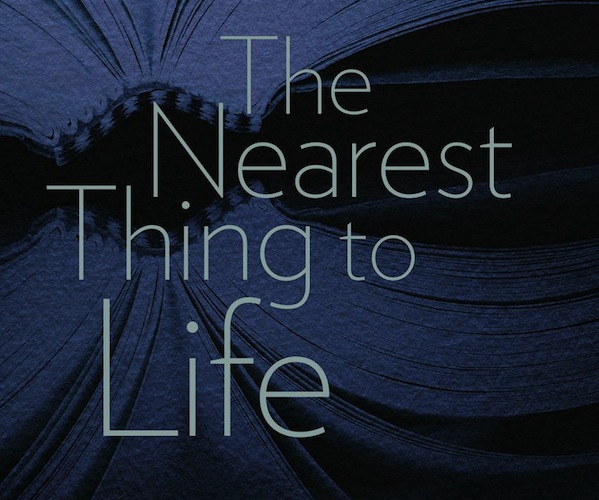Book Review: Literary Critic James Wood and the Art of ‘Deep Noticing’
We will always need critics to show us how literature works by revering it rather than interrogating it as if it had committed a crime.
The Nearest Thing to Life by James Wood. Brandeis University Press, 134 pages, $19.95.

By Matt Hanson
On the first page of The Nearest Thing to Life, his fifth collection of literary criticism (though this volume also contains more than a little memoir), James Wood, Professor of the Practice of Literary Criticism at Harvard University and a staff writer at The New Yorker magazine, offers a quotation from George Eliot: “Art is the nearest thing to life; it is a mode of amplifying experience and extending our contact with our fellow-men beyond the bounds of our personal lot.” Eliot’s humanistic credo serves as the epigraph, title, and springboard for Wood’s approach to criticism.
As a critic, Wood is fascinated by the art of what he calls “deep noticing.” His elegant and lucid prose explores how an author’s carefully selected images aren’t just the extraneous bells and whistles of fiction but its elemental marrow — it’s what makes literature important in the first place.
Citing (among others) Nabokov describing a piece of tissue paper falling to the floor with “infinite listlessness,” D.H. Lawrence describing a kangaroo’s “drooping Victorian shoulders” or Elizabeth Bishop referring to a parking meter as a “moral owl,” Wood emphasizes the ways in which the selection of literary detail turns noticing into a freshly creative act. As Chekhov advised, don’t simply inform the reader that it’s dark; tell us about the moonlight glinting off the buttons of an overcoat.
It’s easy to lose interest in the world’s fleeting impressions and the motivations of the people around us, ephemeral as they are, until you see the world through the eyes of a writer. For Wood, details are “nothing less than bits of life sticking out of the frieze of form, imploring us to touch them.”
Reading Wood on how literature works isn’t just a pleasure in itself, it can help us in making the blur of experience visible and vivid, a means of invigorating what Henry James called “the palpable present-intimate.” His approach is useful as literary criticism, but it is also as a way of subtly encouraging readers to pay closer attention to the texts of their own lives. It is easy, even convenient, to filter out the increasingly over-stimulating world around us. As fleeting as these specifics are, they might be significant — if you are willing to become someone who works especially hard to notice their revelatory power.
If a detail is chosen well enough it can last forever, remaining perpetually new, carrying with it a godlike power to stay in place, resisting the flow of forgetting. As the old saying goes, God (or is it the Devil?) is in the details, but Wood insists that the redemptive power of fiction resides there as well.
I’m using the religious language deliberately — Wood has written a lot about the anguished relationship between literature and religion, and as an atheist from a religious upbringing his description of the subversively secular nature of reading is deeply compelling. Unlike many critics, Wood is an unusually open and autobiographical writer; he doesn’t make lofty claims or churn out dense paragraphs but close-reads the text of his own life to help construct his interpretations.
We read about his pious, dutiful upbringing in the rugged landscape of northern England and how discovering an alternative imaginative life in books changed his life forever. Religion didn’t offer the prodigious young bookworm anything nearly as satisfying as the imaginative bounty of “an utterly free space, where anything might be thought, anything uttered…you might encounter atheists, snobs, libertines, murderers, thieves…drunks and priests, priests who were also drunks, the quick and the dead.”
It’s valuable to be reminded of how literature encourages imaginative freedom. So much au courant literary theory wants to categorize what art can do to within an inch of its life. Free-thinking critics are too often elbowed aside, at least in academia, by professional theorists, implacable jargoneers who emphasize the imperialism of master narratives and subaltern identities and so on, always finding political agendas or ideological skullduggery lurking behind narratives, lifting the veils of oppressive gender relations in sonnets. This approach can be illuminating, but it can easily wind up as reductive and predictable.
Since the 21st century began, there’s been much hand-wringing about literature being bumped aside as a vital form of cultural discourse. Who knows? This might be truth or hysteria. But one thing is certain: we will always need critics to show us how literature works by revering it rather than interrogating it as if it had committed a crime. Wood’s criticism is necessary because it is revitalizing, an articulate and sympathetic demonstration of how readers can draw nearer to life by noticing it more deeply.
Matt Hanson is a critic for the Arts Fuse living outside Boston. His writing has appeared in The Millions, 3QuarksDaily and Flak Magazine (RIP), where he was a staff writer. He blogs about movies and culture for LoveMoneyClothes. His poetry chapbook was published by Rhinologic Press.
